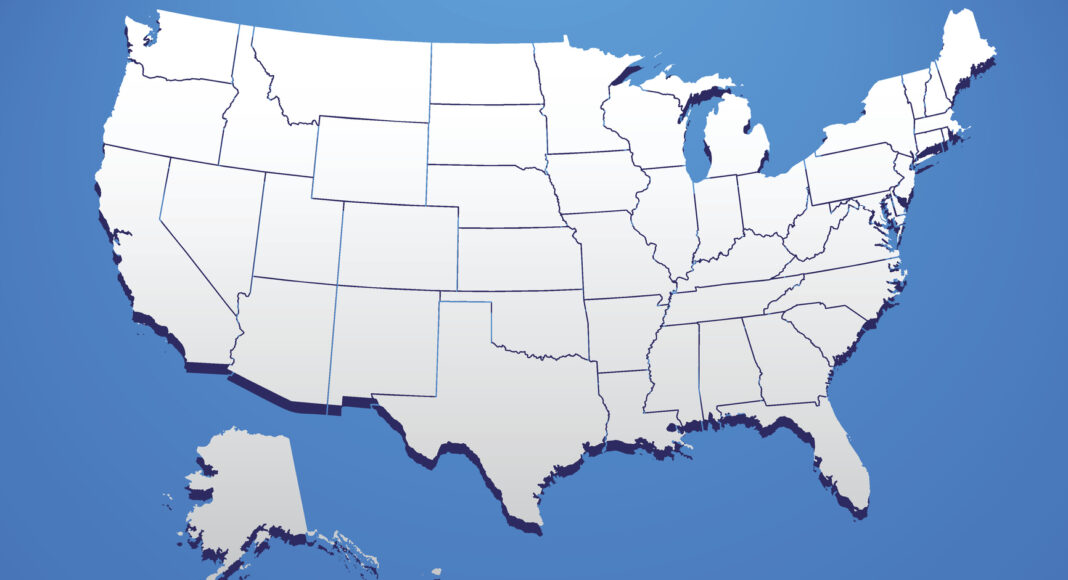New research finds that since the 2000s, US states are most likely to adopt laws enacted by other politically aligned states. In the past, policies tended to spread among geographically close or demographically similar states instead.
All but 5 of the first 27 states that expanded Medicaid coverage in 2014 under the Affordable Care Act had voted for Obama in the 2012 elections. As of 2022, there are 12 states that have yet to adopt Medicaid Expansion. Ten of them voted for Trump in 2020.
Medicaid Expansion is a well-known politicized policy in recent times. The program itself, however, was far less polarizing during its rollout during the 1960s—back then, there was no correlation between the timing of initial state adoptions and their voting patterns. Is this Medicaid case study then just a singular example, or does it represent a general trend of polarization in state-level policy decisions?
In our paper, we use a dataset of over 700 state laws to study how policies spread from state to state. We use two main data sources. The first is the State Policy Innovation and Diffusion (SPID) dataset, which represents typical state laws but may not necessarily cover policies that economists tend to study. Thus for our second source, we checked over 11,000 National Bureau of Economic Research (NBER) working papers to extract the adoption dates of state-level policies.
From 1950-90s, we find that policies were likely to spread between states that were geographically close or demographically similar. This could be due to nearby states learning from or competing with one another (e.g., states raising expenditures when their neighbors do), or policy needs that were spatially or demographically correlated.
But since the 2000s, the strongest predictor of a state adopting a policy is whether other politically aligned states have already adopted it. This pattern holds on both sides of the political spectrum, as well as across policy areas and especially in the NBER dataset of policies.
“Are states now choosing policies according to citizen need, or partisan demand?”
Yet these recent trends in policy diffusion could arise for other reasons besides polarization. For instance, ideologically similar states could now share information and policy needs or have stronger interstate competition.
As two tests for these competing models, we investigate whether policy outcomes such as opioid mortality and poverty rates (reflecting policy needs) have also become more politically correlated, and whether interstate migration (proxying for information flows and competition) can explain the results. Neither seems to be case.
Returning to the polarization theory, we examine the role of party discipline: what happens when the governor and the majority in both chambers of the state government are under the same party?
We find that when state governments unite under one party, they are significantly more likely to pass policies that align ideologically with their party—but only since the 1990s. The same switch in party control had no effect before then.
Based on the evidence, we conclude that the recent trends in policy diffusion are most likely due to the rising polarization of state politicians. As another salient example, we find similar signs of polarization in the state-level COVID-19 policies (e.g., shelter-in-place), but no role of partisanship in vaccine mandates existing since the 1980s (e.g., chicken pox mandates in schools).
This paper builds on a rich political science literature but holds important implications for economists as well, who have long analyzed the effect of state laws such as the minimum wage and voter ID requirements without much heed to the diffusion process. From a methodological perspective, these results could inform the empirical strategy behind such policy evaluations, such as the commonly used difference-in-differences design. More broadly, the evidence brings into question the match quality between states and the policies they are adopting. Are states now choosing policies according to citizen need, or partisan demand?
Learn more about our disclosure policy here.






